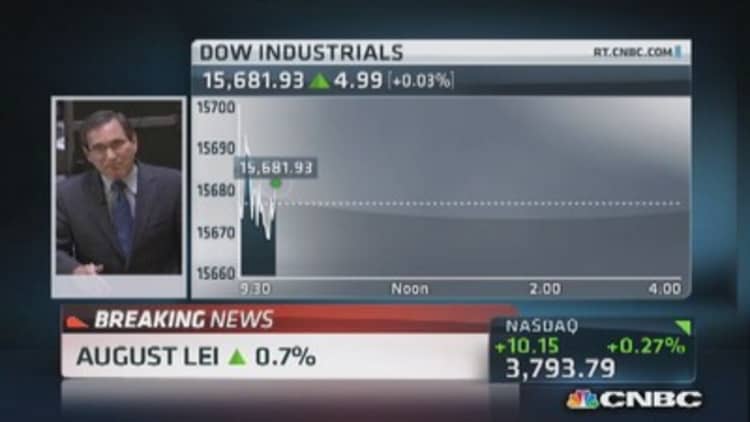Factory activity in the U.S. mid-Atlantic region increased by the most in more than two years in September and firms' optimism about the future hit a 10-year high, a survey showed on Thursday.
The Philadelphia Federal Reserve Bank said its business activity index jumped to 22.3 in September, the highest since March of 2011, from 9.3 in August, easily beating economists' expectations for a reading of 10.0.
Any reading above zero indicates expansion in the region's manufacturing. The survey covers factories in eastern Pennsylvania, southern New Jersey and Delaware.
Leading indicators rise
The new orders index rose vaulted to 21.2 form 5.3, while employment rose to 10.3 from 3.5. Prices paid also rose, climbing to 25.3 from 17.30.

The survey showed respondents were also unusually optimistic about the future, with the six-month business conditions index jumping to 58.2, the highest since September 2003, from 38.9 in August.
The survey is one of the first monthly indicators of the health of U.S. manufacturing leading up to the national report by the Institute for Supply Management.
An index of U.S. leading indicators advanced by more than expected in August as the economy shrugged off higher borrowing costs and the lingering impact of tax increases and Washington budget cuts, that posed a headwind for U.S. growth and hiring.
The private sector Conference Board said that its Leading Economic Index (LEI) gained 0.7 percent to 96.6 last month, compared to a 0.5 percent rise in July.
"If the LEI's six-month growth rate, which has nearly doubled, continues in the coming months, economic growth should gradually strengthen through the end of the year," said Conference Board economist Ataman Ozyildirim in a statement.
Economists polled by Reuters had forecast the index to rise 0.6 percent in August. The Conference Board revised its July reading down slightly from a previously reported 0.6 percent increase.

